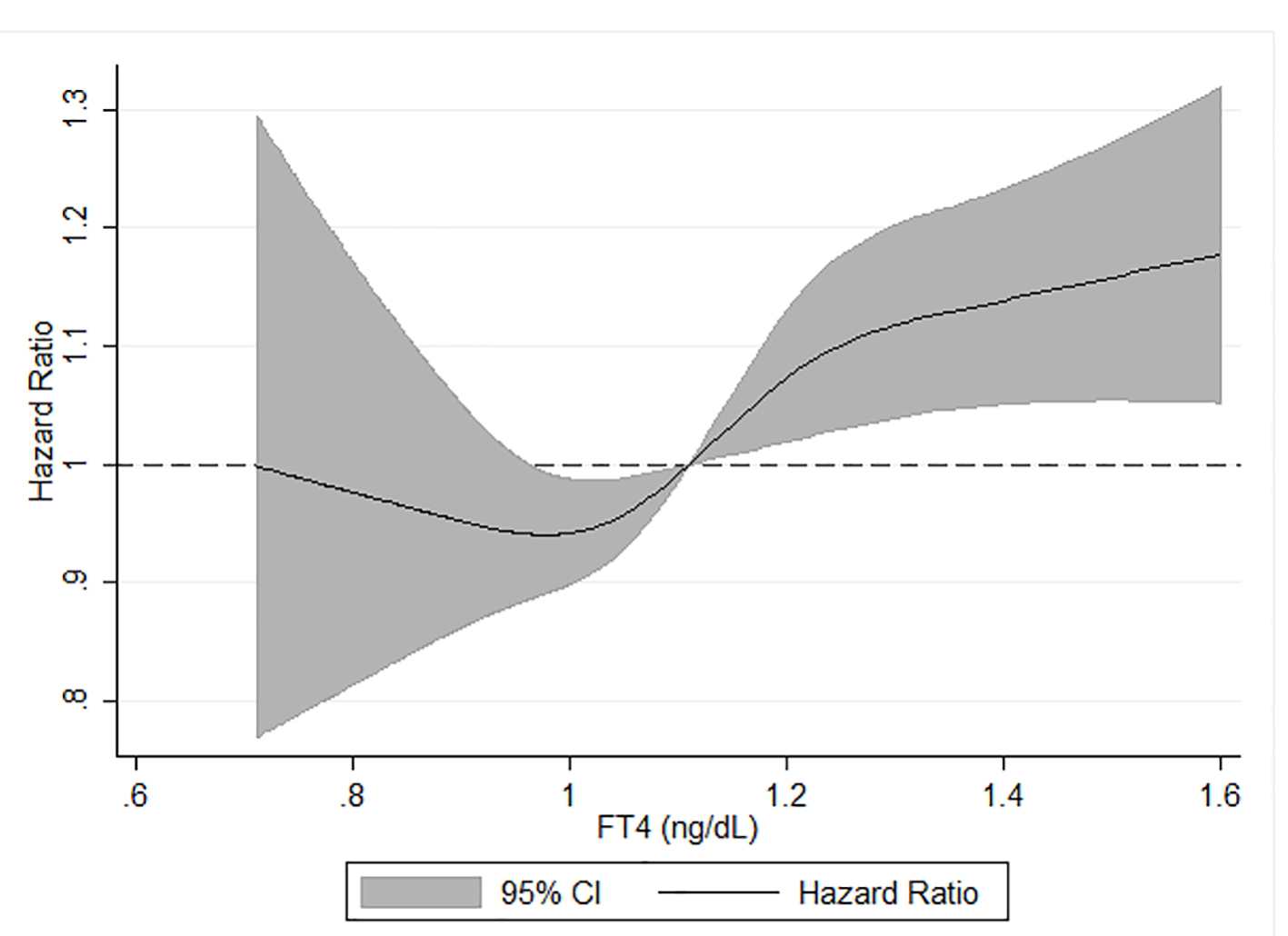
Figure 1. Age, sex, race-center, APOE, income, education and TSH adjusted HR (95% CI) of incident dementia in relation to serum FT4*, ARIC, 1990 - 2017. *Analyzed using restricted cubic splines with knots at the fifth (0.90 ng/dL), 50th (1.11 ng/dL) and 95th (1.35 ng/dL) percentiles of the FT4 distribution. FT4 hormone levels were truncated at the first (0.71 ng/dL) and 99th (1.61 ng/dL) centiles to minimize the influence of extreme values. TSH: thyroid-stimulating hormone; HR: hazard ratio; CI: confidence interval; FT4: free thyroxine; ARIC: Atherosclerosis Risk in Communities.